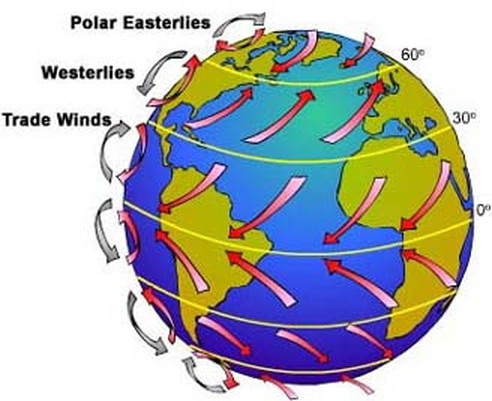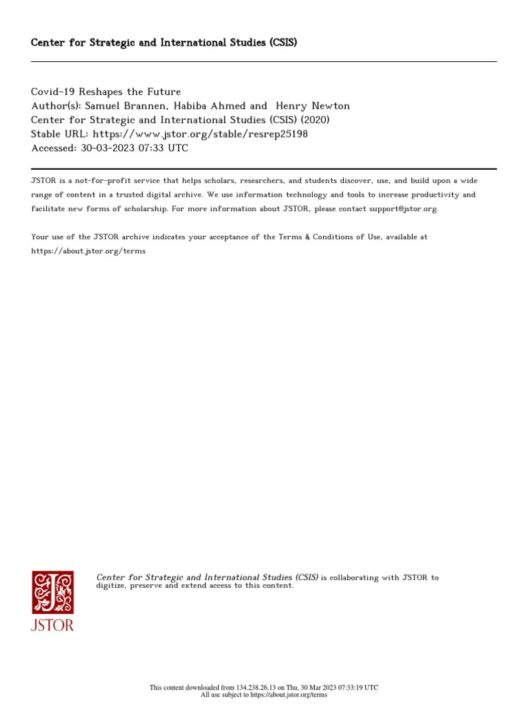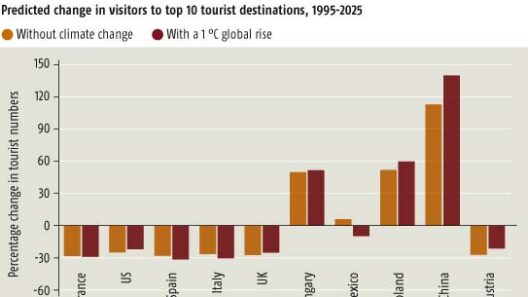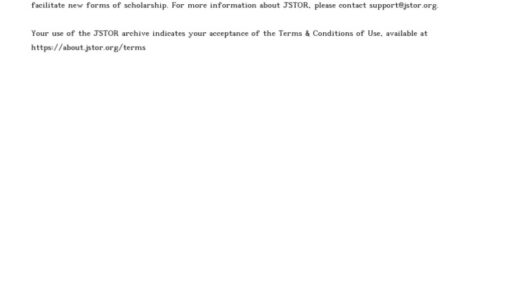The interplay between global winds and climate is a mesmerizing spectacle, akin to a grand ballet where air masses dance in a harmonious rhythm. Have you ever wondered how these gusty companions work together to transport warm air across the planet? Understanding the movement of warm air and the influence of climate on weather patterns can be both enlightening and perplexing. This exposition will traverse the complexities of global wind patterns while addressing a significant question: How does the dynamic interaction between warm air and global winds contribute to climate variability and weather events we experience daily?
To begin this exploration, it is essential to establish a foundational understanding of what global winds are. Global winds are large-scale air currents that circulate around the Earth and are driven primarily by the uneven heating of the planet’s surface due to solar radiation. Various factors, including the Coriolis effect, pressure differences, and the geography of the Earth, contribute to these winds’ directions and intensities. As warm air rises, it creates a vacuum that cooler air rushes to fill, thus initiating the continuous movement of air masses.
A pivotal component of this air movement is the Hadley Cell. Positioned between the equator and roughly 30 degrees latitude, the Hadley Cell is a circulation pattern where warm air rises around the equator, subsequently cools, and then descends at about 30 degrees latitude. This process not only facilitates the upward movement of warm air but also plays a crucial role in redistributing energy across the globe. As warm air moves poleward from the equator, it carries with it moisture and heat, influencing not just local climates but also contributing to broader weather patterns.
Moving north and south from the equator, one encounters the Ferrel and Polar Cells, which further elaborate on this air current choreography. The Ferrel Cell, located between 30 and 60 degrees latitude, operates in opposition to the Hadley Cell, meaning it moves air in a west-to-east direction. This convective mechanism is instrumental in creating temperate climates. Meanwhile, the Polar Cells, situated in the farthest northern and southern latitudes, demonstrate a distinct movement wherein cold, dense air descends around the poles and flows toward the equator. These interactions among the three primary circulation cells contribute significantly to the diverse weather patterns experienced around the world.
But what happens when warm air collides with these dynamic wind systems? The convergence of warm and cold air can invoke an array of weather phenomena. For instance, warm, moist air from tropical regions can meet with cooler air masses from the poles, resulting in storms, precipitation, and even severe weather conditions such as hurricanes or tornadoes. This vivid interaction not only shapes daily weather but also contributes to climate trends over extended periods.
Climate variability, influenced by factors such as El Niño and La Niña, can also alter wind patterns dramatically. During an El Niño event, the warming of ocean waters in the central and eastern Pacific disrupts typical wind patterns, leading to extensive climatic consequences on a global scale. Conversely, La Niña characterizes periods when ocean temperatures are cooler than average, which can intensify trade winds and evoke contrasting climate conditions. These seasonal and interannual changes illustrate the complex relationship between global winds and climatic phenomena.
This leads to an intriguing challenge: With climate change looming as a formidable threat to our planet, how might these fundamental wind systems adapt? As global temperatures rise, polar ice melts, and oceans warm, one has to consider the ramifications for global wind patterns. Climate models suggest that alterations in these quintessential air currents could lead to more frequent and intensified weather events, shifts in agricultural zones, and disruptions to ecosystems. The stakes are high, and the need for comprehensive understanding is essential.
The ramifications of altered wind patterns extend beyond just the immediate weather. Agriculture, water supply, and natural ecosystems are profoundly affected by these changes, necessitating a strategic approach to counteract potential adversities. As warm air continues to be transported by global wind patterns, understanding the delicate equilibrium within this system becomes increasingly imperative for climate resilience and adaptation strategies. How can we embrace responsible stewardship of our environment while acknowledging the inevitable interactions of warm air and global winds?
In conclusion, the movement of warm air facilitated by global winds intricately weaves into the fabric of climate and weather patterns. Understanding this phenomenon offers insights into the complexities of our atmosphere and highlights the critical interdependencies within our ecological systems. As we face the challenges posed by climate change, it becomes increasingly vital to comprehend these atmospheric mechanisms and advocate for sustainable practices. The world is not just watching; it is waiting for informed actions to navigate the shifting winds of climate responsibility profoundly. What role will you play in this ongoing narrative?







